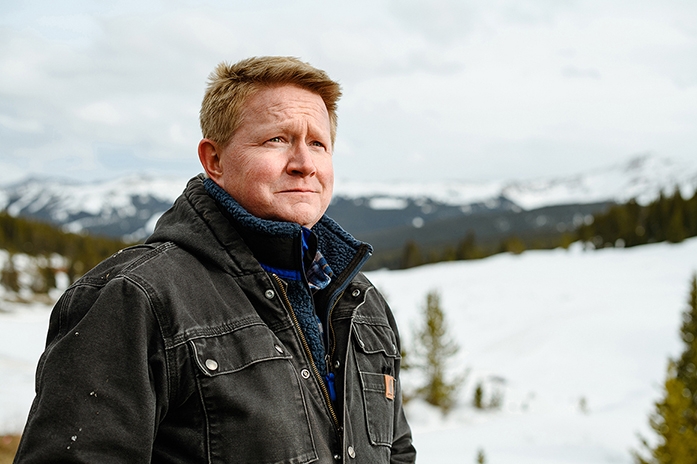Highways aren’t just for moving vehicles, especially in Colorado, where herds of migrating elk, mule deer and other wildlife need safe passage.
Ask John Kronholm '97, the project manager running an environmental assessment for a $315 million multifaceted expansion and reconstruction of Colorado’s I-70 Vail Pass. The project required a careful study of many factors including wildlife movement, water quality, wetland conservation, historical preservation, aesthetics and recreational use.
Kronholm, a double major in civil engineering and geology at Union, credits his time on campus for developing his interest in research and his ability to manage the interests of multiple stakeholders in a complex project.
“There’s more to engineering than just paving the road,” he said. “What about what goes under it? What about the communities? It’s eye-opening for an engineer.”
The 10-mile stretch over Vail Pass is a vital artery for the region’s economic lifeblood: skiing and other forms of outdoor recreation. With bad weather and a turbulent traffic flow caused by a 2,000-foot elevation change, the highway also has the highest crash rate on I-70 in Colorado, Kronholm said.
Crashes shut down Vail Pass for about 375 hours each year with an economic impact to the area’s ski resorts estimated at about $2 million per hour, he said, adding that even when the pass is open, travel times to the airport and hospitals can be unreliable.
Kronholm’s project is hampered by a limited construction window, from April to October. The project could run 10 years (“the rest of my career”) and total about $1.3 billion, he said.
In designing wildlife passages, Kronholm hypothesized that the size of crossing structures was important to success. He ran studies with wildlife cameras and ran regression models based on data from 16 studies. He determined that there was a point of diminishing returns and that engineers could design smaller crossings that would save more than $2.2 million from original plans.
He presented his research at the International Conference on Ecology and Transportation in Burlington, Vt.
“I thought Union really set me up for success,” he said. “I can credit Union and faculty like Professor Ashraf Ghaly for developing my interest in research to come up with this hypothesis.”
Kronholm, who as a kid loved roaming the hills in his native Blandford, Mass., came to Union and gravitated toward studies and activities that got him outside. He picked CE and geology, both of which involved field work. He was a member of the crew and cross country teams, served as president of the outdoor club and was active in the community service theme house. He joined faculty for geology field work in Kamchatka, in the far east of Russia, where their helicopter “circled a grizzly bear that looked like a Buick with legs,” he recalled.
Kronholm said he is gratified to see the return of civil engineering at the College. ‘Union drove my work ethic and my study habits,” he said. “I look back on it and miss those days. Union was a great experience.”
